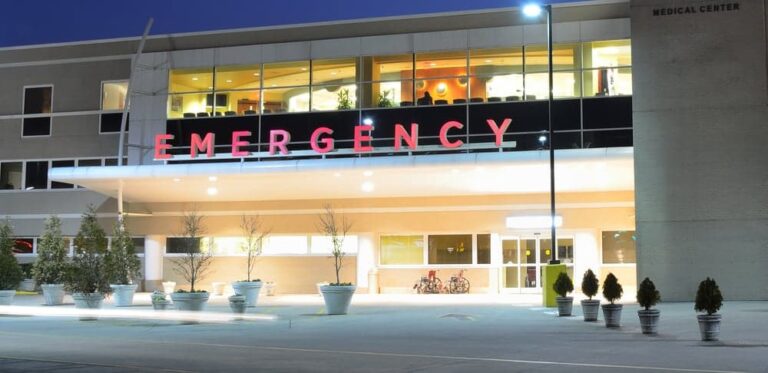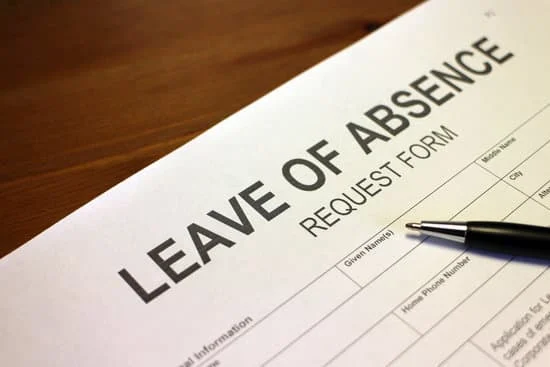On the eve of the COVID-19 pandemic the number of urgent care centers in the United States had swelled to more than 9,000 facilities, an increase of 58 percent in just six years as Americans looked for alternative care options between visits to their primary doctor and trips to the emergency room.
“Both urgent care centers and retail clinics have continued to grow across the U.S. as patients look for convenience and affordability, creating competition with traditional hospital and physician practice services,” said Fierce Healthcare.
Increasing Healthcare Choices, Increasing Costs
Except for the declining rural population where health service is increasingly limited, Americans in urban and suburban areas have more healthcare options than ever from urgent centers, stand-alone emergency rooms, hybrid urgent centers and ERs, and walk-in clinics compete with traditional hospital-based emergency rooms.
With those increasing healthcare choices, also comes increasing healthcare costs as the U.S. health consumption expenditures per capita ($12,914 in 2021) is twice the average of similar nations ($6,125).
Expenditures in neighboring Canada, for example, are $5,905 per year.
One reason Americans pay more per year in healthcare costs is their overreliance on trips to the ER with the Center for Disease Control and Prevention (CDC) estimating that some 130 million Americans visited the Emergency Room in 2018 with only 16.2 million of those visits requiring hospitalization.
The New England Health Institute (NEHI) estimates that 56 percent of emergency room visits are “totally avoidable.”
“The overuse of U.S. emergency departments (Eds) is responsible for $38 billion in wasteful spending each year. Drivers of ED overuse include lack of access to timely primary care services, referral to the ED by primary care physicians themselves, and financial and legal obligations by hospitals to treat all patients who arrive in the ED,” said the NEHI, calling it the “wrong care in the wrong place at the wrong time.”
Why does this matter?
Urgent Care pioneer, American Family Care, estimates the average urgent care visit at between $100 and $200. Dr. Franz Ritucci, President of the American Academy of Urgent Care Medicine, estimated that 70 percent of urgent care patients use their health insurance making them responsible only for their co-pay, and any applicable deductible.
Meanwhile, Consumer Health Ratings wrote in January 2023 that: “How much does an ER Visit cost? The short answer is a lot. A single ER visit cost $1,150 on average in 2020. Emergency Room visits by those who were uninsured cost almost $1,500 on average. Visits by people under 65 who had private commercial insurance had an average cost of $1,682.”
Bottom line: A visit to the ER can be 10x more costly than a trip to Urgent Care.
Increasing Healthcare Choices, Increasing Confusion
As non-traditional drop-in healthcare facilities spring up across the country, it adds more choices for the consumer but also more confusion.
Some patients stop by stand-alone emergency rooms, assuming they are urgent care centers since they are not attached to a hospital, but these ERs operate, including pricing, on the same basis as traditional emergency rooms.
“As you may be aware, a trend towards free-standing ERs is popping up in areas around your city. Beware of the differences between a free-standing ER and an Urgent Care clinic,” the Texas Schools Health Benefits Program warned its members. “At first glance, free-standing ERs look like an Urgent Care Clinic but there’s a BIG difference. While an urgent care clinic’s billing is usually similar to that at your doctor’s office, billing at a free-standing ER is like a trip to a hospital ER.”
Adding to the perplexity is a newer hybrid category of urgent care + emergency room facilities. Here the staff can decide on the level of treatment required for your visit, but the catch is that if you visit “after hours” when the urgent care is closed (typically between 9 p.m. and 7 a.m. at some facilities) then you will be charged the emergency room rates.
The difference between a visit to an urgent care and an ER can be shocking when it comes time for the bill with NBC5 reporting on a Texas resident who thought they were stopping by an urgent care for a local cold, assuming a co-pay would be due, only to find later the facility was a stand-alone ER and their bill was $1,053.
Remember that free-standing ERs will always have the room “emergency” in their name and are required to have an ambulance entrance.
Making the Decision Between Urgent Care and ER
It is difficult to decide at times between urgent care and the emergency room, but the first caveat is always that if you or a loved one are in a life-threatening situation such as lapses in consciousness or unresponsive behavior then call 9-1-1 to get immediate help.
The National Stroke Association says that for every minute, 2 million brain cells die during a stroke and that EMTs can begin life-saving techniques after arrival.
If the situation does not call for 9-1-1 then a good rule of thumb is that if you have a non-life threatening condition with minor to moderate symptoms, urgent care centers can handle it, but if it’s a life-threatening condition with serious symptoms then you should go to an emergency room.
“If you are not sure what you’re experiencing is an emergency, try contacting your PCP first for guidance. If they are unavailable, try the nearest urgent care center or virtual care/telemedicine resource if you have access, as each of these can help you make a more informed decision on whether to go to the ER,” said Dr. Ben Aiken, a family medicine physician and VP of Health at Decent.
It can be a tough call with cold and flu symptoms, for example, being treated at a walk-in clinic if mild; treated at an urgent care if moderate; and treated at an ER if severe.
Types of Injuries or Illnesses to Treat at an Urgent Care
The wide variety of injuries or illnesses that can be treated at an urgent care can be surprising with all the following taken care of:
- Fevers, flu, or cold symptoms
- Sore throat
- Sinus infections
- Ear and eye infections
- Skin infections (cellulitis)
- Animal or insect bites
- Seasonal allergies
- Bronchitis
- Sprains, dislocations, and broken bones
- Cuts and bleeding that may require stitches
- Vomiting or diarrhea
- Breathing discomfort, such as moderate asthma
- Urinary tract infections
- X-rays and lab tests
- Abdominal pain
- Minor back pain
- Muscle strains
- Minor burns
- Pink eye (conjunctivitis)
- Strep throat
- Dehydration
- Mononucleosis
Types of Injuries or Illnesses to Treat at an Emergency Room
Remember that some of the injuries or illnesses listed as treatable at urgent care should be brought to the emergency room if they are severe or life-threatening.
When you should head to the ER includes:
- Stroke (symptoms such as sudden weakness, changes in vision or trouble talking)
- Heart attack (symptoms such as chest pain, sweating, and accompanying pain in your arm, neck or back)
- Serious accidents
- Severe (or sudden) chest pain
- Severe abdominal pain
- Any sudden, severe pain
- Wheezing or shortness of breath (Difficulty of breathing)
- Paralysis
- Intestinal bleeding
- Severe bleeding
- High fevers or rash, especially among children
- Vaginal bleeding with pregnancy
- Repeated vomiting or bleeding that won’t stop
- Poisoning
- Severe head or eye injuries
- Severe Allergic reactions
- Unconsciousness
- Head injury, back injury, or other major trauma
- Drug overdose
- Major bone breaks, burns, and cuts
- Eye injury
- Fainting/change in mental state
- Concussion/confusion
- Seizures
- Facial lacerations
- Severe cold or flu symptoms
Also, do not forget that a growing third option is the walk-in clinics popping up in pharmacies, grocery stores, and other retail locations that can treat:
- Vaccinations or shots
- Mild cold or flu symptoms
- Slight sprains
- Rashes without fevers
- Sore throat
- Ear pain
- Eye redness, discharge, or itchiness
- Mild Cough and congestion
The reality is that there is no definitive list of ailments that demand treatment at emergency rooms, so if you are in doubt and the condition could impair or endanger your life, then treat it as an emergency.
Otherwise, consider the cost savings and convenience of getting your injury or illness treated at the nearest urgent care center.
“Time of day considerations aside, urgent care visits are almost always the preferred route in non-emergency situations,” says Debt.org. “The rule of thumb should be that if the condition is not life-threatening, but needs treatment attention today, or before your primary care physician can see you, head to an urgent care center.”






